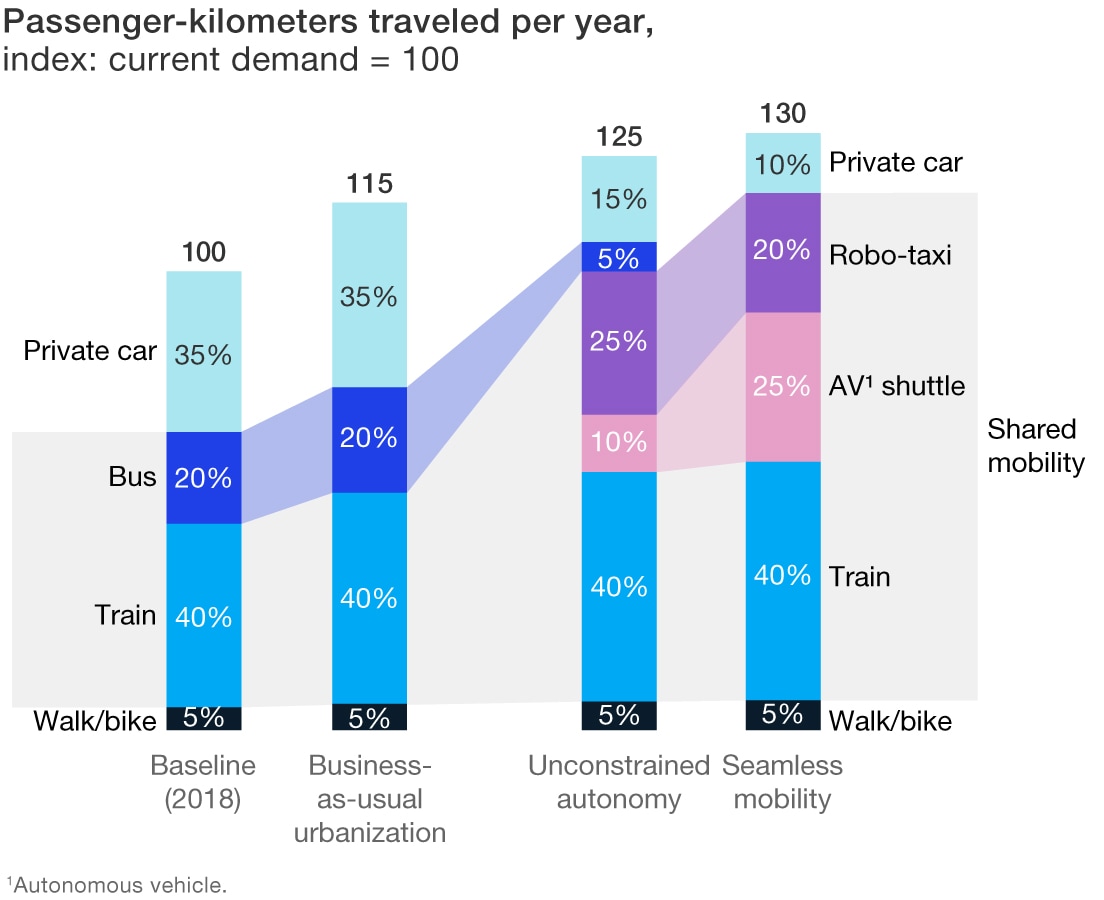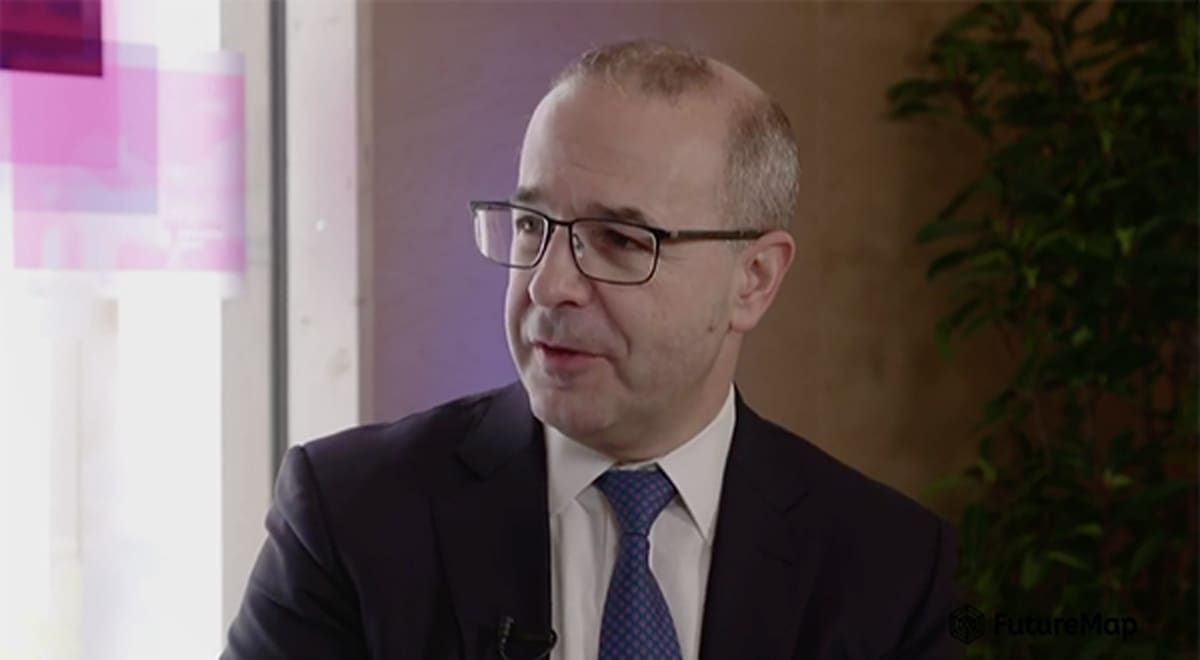| Plus, our managing partner’s take on Davos |
 |
February 1, 2019 |
|
 |
| Our best ideas, quick and curated |
|
|
|
|
| This week, how changing technologies help urban dwellers grapple with congestion and quality of life. Scroll down for a look at how person-to-person interaction still matters in retail banking, as well as an alpine-side chat with our managing partner, Kevin Sneader, from last week’s World Economic Forum in Davos. |
|
|
|
| More parks and open space. Less time in traffic. Cheaper, easier, more flexible travel. Sound like an urban myth? Not quite. It’s a description of “seamless mobility”—a concept that’s futuristic but far from impossible. |
| Simply defined, seamless mobility uses technologies—from smart traffic lights to autonomous vehicles (AVs) to preventive maintenance—to integrate all sorts of travel. Many of the options are fueled by low-polluting, low-emissions sources of power. Pretty cool. |
| A few examples: seamless mobility means fewer private cars, with people mixing and matching rail transit and low-cost, point-to-point travel in robo-taxis and autonomous shuttles. It means converting parking spaces into parks or gardens. And it means widespread use of AVs, which is expected to result in many fewer traffic deaths. |
 |
| Why does seamless mobility matter? In many urban centers, congestion is not only bad—it’s getting worse. Cities are already home to most of the world’s people, and their population is set to rise 15 percent by 2030. Unless something changes, congestion will increase at least that much. By addressing mobility challenges head-on, cities could accommodate 30 percent more traffic and still cut travel times 10 percent. |
| Of course, making the shift won’t be easy. It requires significant financial investments, imaginative policies, and substantive collaboration between the private and public sectors. It may mean new kinds of assets, such as storage and maintenance facilities for shared autonomous fleets, fast-charging infrastructure, and dedicated AV lanes equipped with vehicle-to-infrastructure communications and IT systems. All of this represents a significant new area of opportunity for infrastructure companies. |
| For cities and for urban dwellers alike, the results could be transformative. Business as usual is likely to just bring more misery on the roads, trains, and buses. And who wants that? |
|
|
 |
| Podcast |
| Cybersecurity: Are we winning yet? |
| The bad news is that governments and companies still have work to do to protect people, institutions, and even entire cities and countries from potentially devastating cyberattacks. The (pretty) good news is that progress is being made, albeit slowly. In this podcast, McKinsey senior partner David Chinn and cybersecurity expert Robert Hannigan walk through the list of threats and potential responses. |
|
|
| MORE ON MCKINSEY.COM |
| The human touch in retail banking | Sure, banking apps are great—but even among customers who favor them, face-to-face interactions still matter. Here’s how banks can ensure they don’t give personal exchanges short shrift. |
| What comes after fast growth? | You’re a midsize industrial company. You’ve grown fast. You’ve hit a stable trajectory. What next? |
| Compliance at an inflection point | How does your bank’s compliance function measure up? Our recent benchmarking survey reveals five steps that help get compliance on track. |
|
|
 |
| WHO WE’RE WATCHING | Kevin Sneader |
| Last week, McKinsey’s global managing partner, Kevin Sneader, sat down at Davos with Parag Khanna, global strategy advisor and author of the forthcoming book, The Future is Asian. Kevin spoke on a range of topics, from why, besides the obvious growth opportunities, he chose to remain in Hong Kong after being elected to his new role (hint: family and fun) to the latest on his strategy for the firm. Watch the Facebook Live interview here.
|
|
|
| BACKTALK |
| Have feedback or ideas? We want to hear from you. |
|
|
|
|


| |